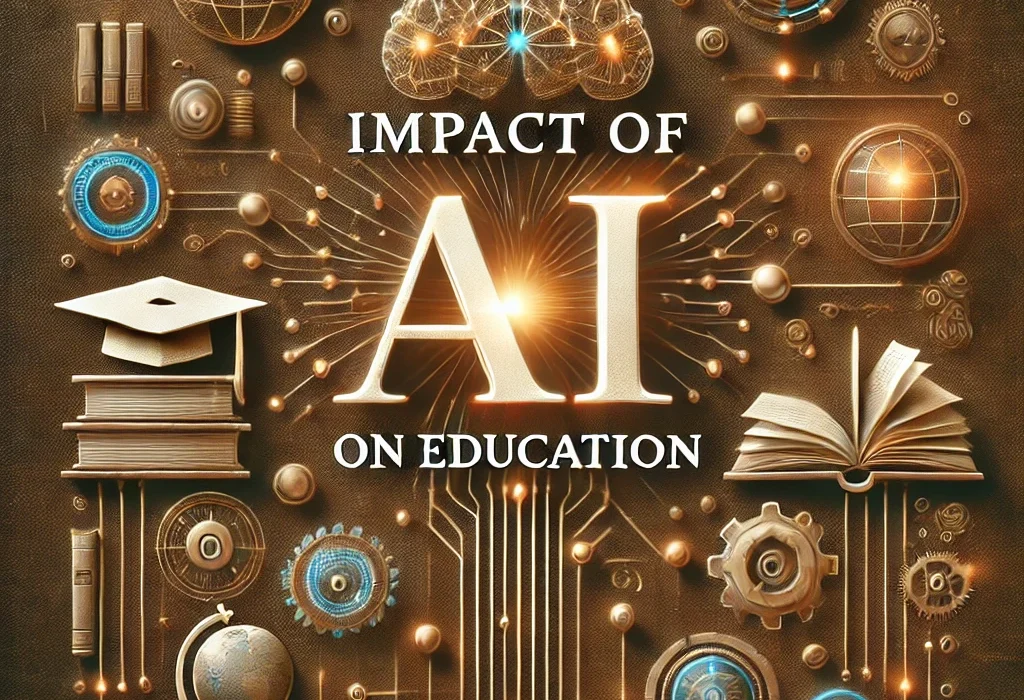Artificial intelligence (AI) is reshaping the education sector, transforming traditional learning paradigms and enabling new ways of teaching and learning. By introducing smart technologies and adaptive systems, AI is enhancing accessibility, personalizing education, and addressing long-standing challenges in the field. Here’s a detailed exploration of its impact:
1. Personalized Learning Experiences
AI-powered platforms like intelligent tutoring systems analyze students’ learning patterns and customize educational content to their needs. For example:
- Adaptive Learning Tools: Programs such as DreamBox and Smart Sparrow adjust the difficulty level and pace based on the learner’s progress.
- Tailored Feedback: AI systems provide instant and precise feedback, enabling students to understand mistakes and improve continuously.
2. Increased Accessibility
AI makes education more inclusive for students with disabilities or those in remote areas:
- Text-to-Speech and Speech Recognition: Tools like Google’s AI-powered text-to-speech converters support visually impaired learners.
- Language Translation: AI-driven apps like Duolingo break language barriers, making education accessible to non-native speakers.
- Virtual Learning: AI facilitates online education platforms, providing resources and courses to learners globally, especially in underserved regions.
3. Automation of Administrative Tasks
AI reduces the workload of educators by handling repetitive tasks, allowing them to focus more on teaching:
- Grading Systems: Platforms like Gradescope automate the evaluation process, ensuring consistency and efficiency.
- Attendance and Scheduling: AI systems streamline administrative duties such as attendance tracking and timetable management.
4. Enhanced Learning Engagement
AI integrates cutting-edge technologies like augmented reality (AR) and virtual reality (VR) into classrooms:
- Immersive Learning: Tools like Google Expeditions allow students to explore historical landmarks or biological structures through VR, enhancing understanding and retention.
- Interactive Content: AI-powered quizzes, simulations, and games engage students, making learning enjoyable and effective.
5. Data-Driven Insights for Educators
AI enables educators to analyze large sets of student data, providing actionable insights:
- Early Intervention: Predictive analytics identify students at risk of falling behind, helping teachers intervene timely.
- Curriculum Optimization: Insights from AI tools guide educators in tailoring curricula to meet students’ evolving needs.
6. Challenges and Concerns
Despite its potential, AI in education poses challenges:
- Privacy Issues: The collection of personal data raises concerns about security and misuse.
- Inequality: Access to AI tools is often limited to well-funded institutions, widening the digital divide.
- Dependency on Technology: Over-reliance on AI might reduce critical thinking and problem-solving skills among students.
7. Future Prospects
The integration of AI in education is set to grow, with advancements in technologies like generative AI. Emerging trends include:
- AI Tutors: Virtual tutors will evolve to offer more nuanced support.
- Gamification: AI-powered gamified platforms will make education more interactive and fun.
- Global Collaboration: AI will connect educators and students worldwide, fostering cross-cultural exchanges and collaborative learning.
Conclusion
AI is revolutionizing education by making it more personalized, accessible, and engaging. However, it is crucial to address the ethical and infrastructural challenges to ensure that its benefits are equitably distributed. As AI continues to evolve, its potential to transform education remains immense, paving the way for a more innovative and inclusive learning ecosystem.

